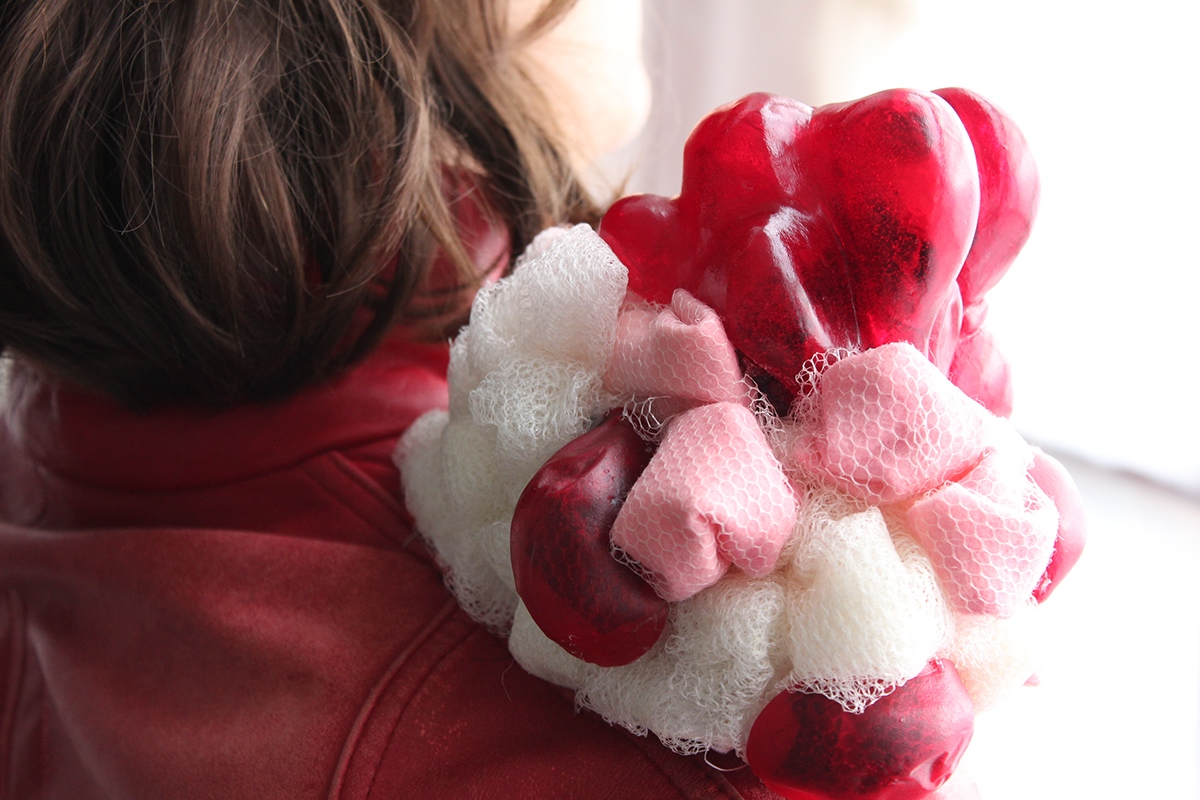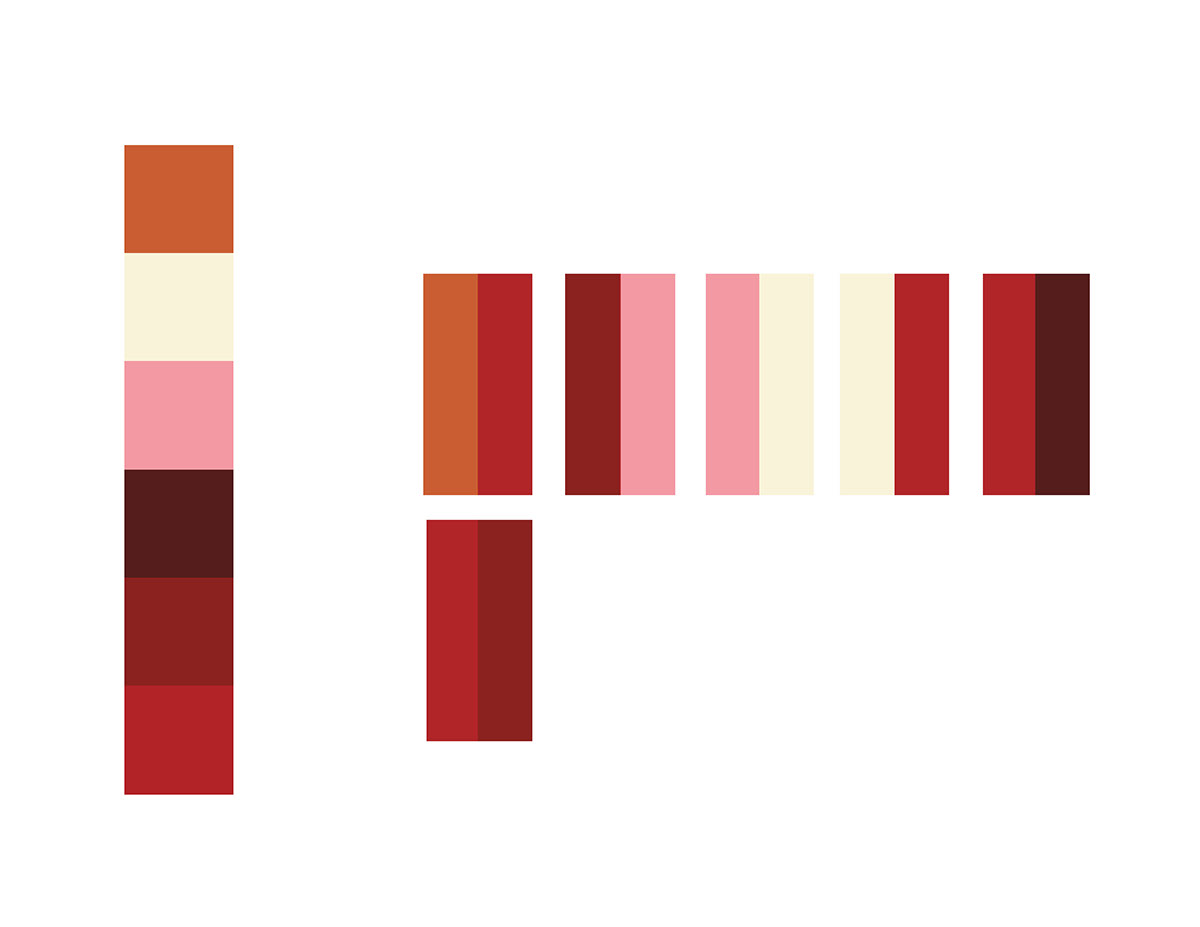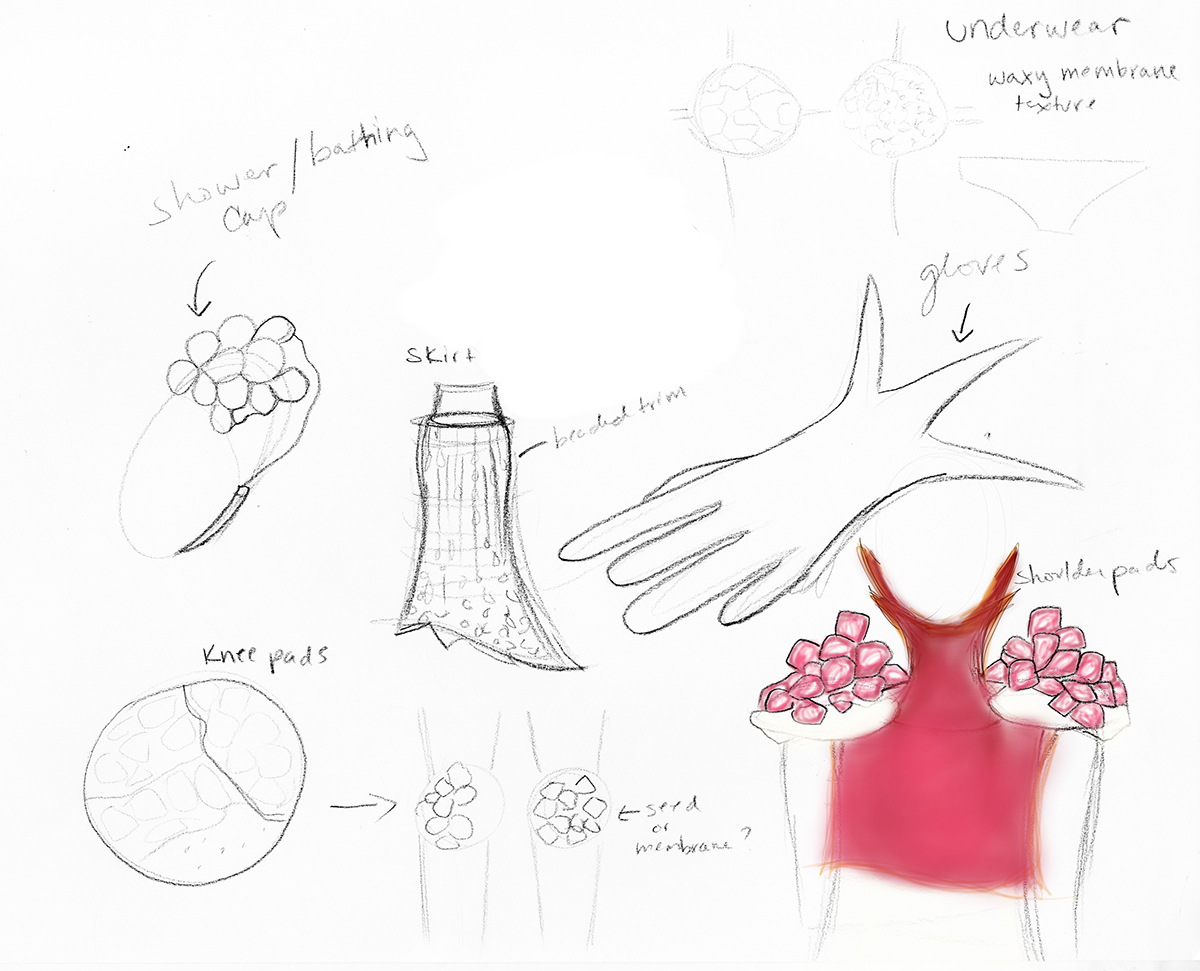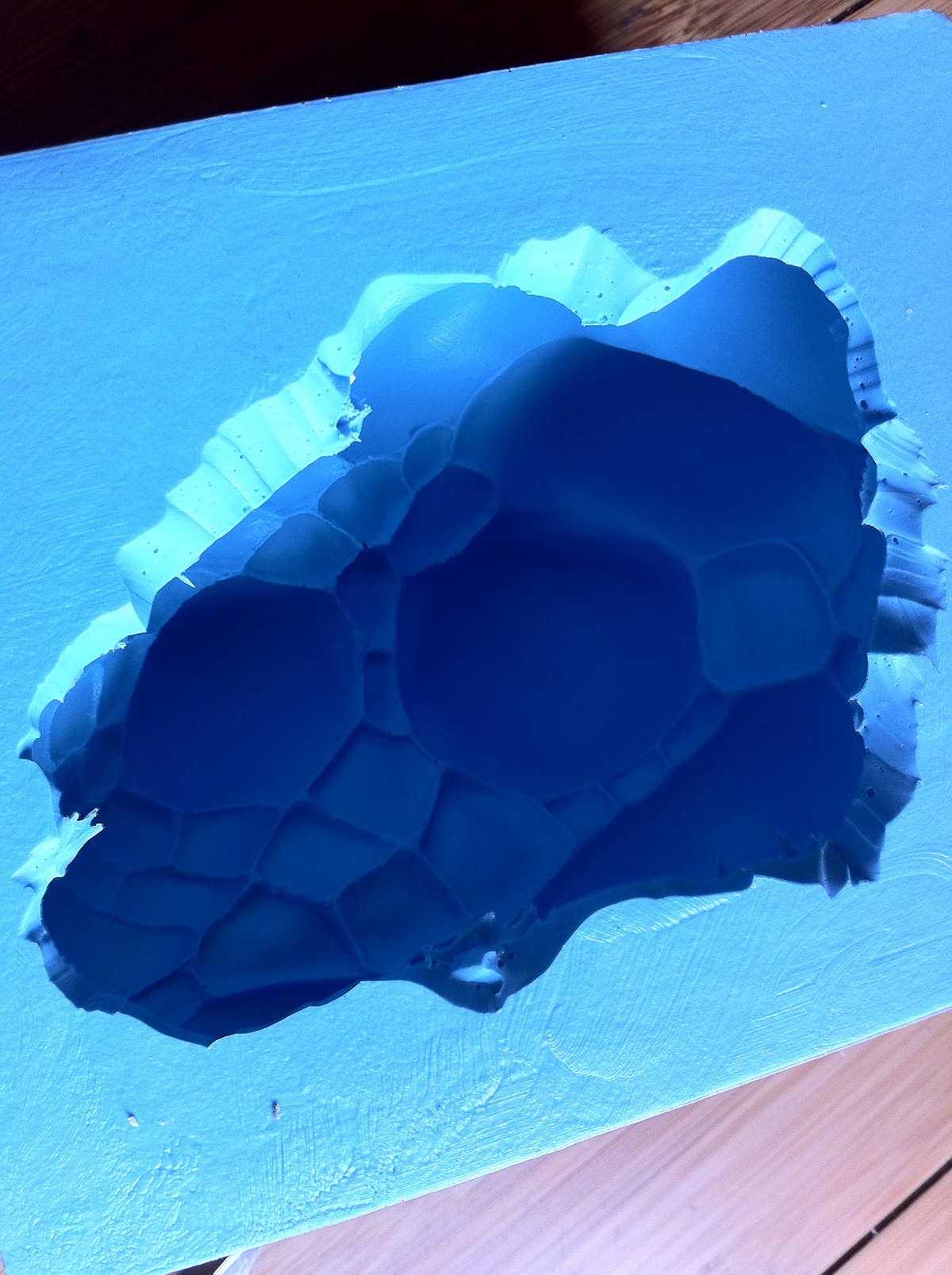
Inspiration from the jacket came from the color, shape, and texture of the promegranate fruit. Leathery outside, spongey white pith, conceal tiny jewels of translucent red fruit.


We began by writing a descriptive piece about our chosen inspiration as a way to investigate its characteristics and properties.

" One of my favorite parts about the pomegranate is the contrast of the yellow tinted membrane and the rich red seeds that it houses. Though the color pallette appears limited, this fruit posseses various levels of color saturation. Each seed has a significant amount of transparency; when grouped the color appears more rich and vibrant. The texture of the inside fruit is smooth and glass-like. The outside is soft and waxy. My connection to this fruit is strong. I have a memory of my grandmother sitting on my sister’s bed in Greece cracking open a pomegranate over her apron and feeding it to the both of us.
I’ve always wanted to create something inspired by this fruit. Every time I eat one, I’ve thought about making jewelry with it somehow. How do you recreate something that nature made so beautifully, or do you preserve it instead? Maybe by coating the seeds with a resin.
The structure of the pomegrante itself has always fascinated me. It’s cell-like structure of transparent yellow membrane cushions the seed. I have observed the way the seeds can burst and stain the edge of the membrane, or the very tip when plucked from its waxy house, turning those stained bits pink; much like spilling red wine on a beige carpet."

The next step was deconstructing the colors from the picture we chose. The colors were separated and measured. Then, the percentages were visualized using a bar graph.

Color Adjacencies: Six colors on the image were extracted from the bar graph. Colors that were adjacent to one another were matched and visualized using another chart. These colors would correspond int he design of the final piece.

While the colors were being analyzed and distilled. Designs were being explored and sketched. Fabrics and alternative materials were discovered.

To make the shoulder pieces for the jacket, a positive image was carved out of self-drying clay. A silicone mold was made from the painted model. The cavity on the silicone mold was left open for a quick drying resin to be poured and spread - by rocking the mold.


The result was a series of hollow resin forms. Varying levels of pigment were tested, to achieve the proper level of translucence and color saturation.


